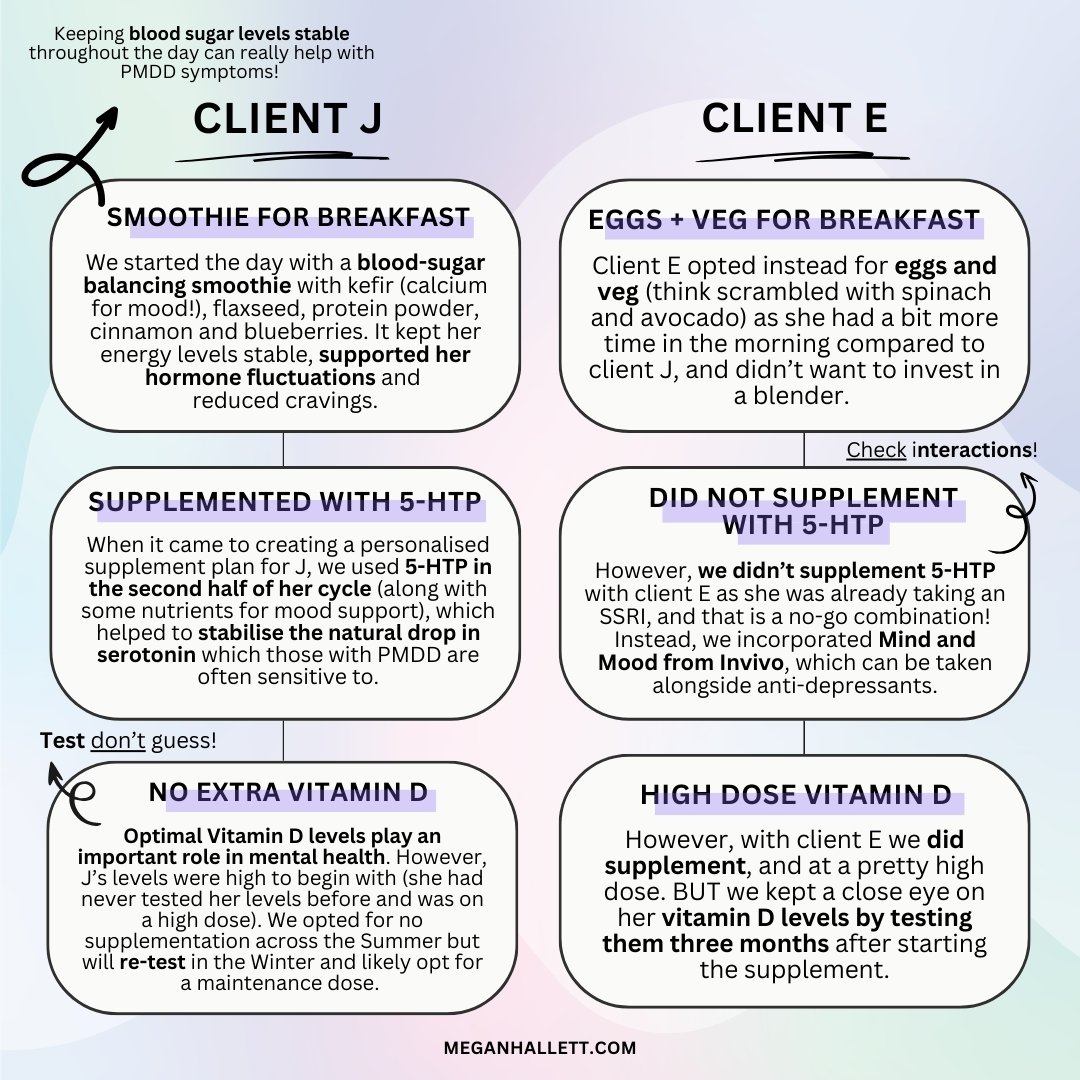How Do You Treat PMDD Naturally? Same Symptoms, Two Different Plans
Same symptoms, two different plans!
I always stress the importance of personalised healthcare. No two plans should be the same, because no two women are the same - even if the condition and symptoms are!
So how do you treat PMDD naturally? My plans combine nutrition changes, supplement protocols and lifestyle changes - all based on the latest evidence.
Here are three SMALL differences in plans I made for two women with the exact same PMDD symptoms and why (… because the one-size-fits-all approach is NOT the vibe).
Both J and E have PMDD (premenstrual dysphoric disorder). In their initial consultations, they both reported feeling awful in their luteal phase (second half of the menstrual cycle) - think very, very low mood and depression, heightened anxiety and poor sleep. They both had a few physical symptoms too - such as fatigue and an increase in cravings.
On paper, you would think they would benefit from the same PMDD plan of action, the same nutrition, supplement and lifestyle interventions. And whilst we know that there certainly are some foundations that suit EVERYBODY (think blood sugar balance and light therapy!), other aspects really do need personalisation.
This is why I love working 1-1 and always stress that if you can, working with a professional who honours this is one of the best things you can do. It can help to not only get you feeling more confident in treating PMDD naturally, but you have a helping hand when it comes to maintaining consistency with your changes.
Want to learn more about my hyper-individualised approach to PMDD? Book a quick chat (free!) with me via the link below.
Megan Hallett and the content provided are not intended to treat, diagnose, cure or prevent any disease. All material on meganhallett.com is provided for educational purposes only. Always seek the advice of your doctor and/ or another qualified healthcare provider for any questions you have regarding a medical condition, and before undertaking any diet, supplement, exercise or other health-related programs.

